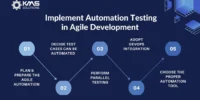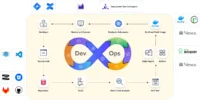The advent of no-code/low-code platforms has sparked a revolutionary shift in software development, empowering individuals with diverse skill sets to participate in the creation of digital solutions. In this guide, we’ll explore the zero-code revolution and provide quick tips for embracing no-code/low-code development methodologies. ️
1. Understanding No-Code/Low-Code
No-code/low-code development involves creating applications with minimal hand-coding, relying on visual interfaces and pre-built components. Understand the basics of these platforms to appreciate their potential for accelerating application development.
2. Identify Appropriate Use Cases
Determine which projects are best suited for no-code/low-code development. These platforms excel in scenarios where speed, simplicity, and ease of iteration are essential. Tasks like form creation, workflow automation, and simple applications are ideal candidates.
3. Choose the Right Platform ️
There are various no-code/low-code platforms available, each with its strengths. Choose a platform that aligns with your project requirements, scalability needs, and integration capabilities. Consider factors such as user interface, database support, and community support.
4. Learn the Basics of UI/UX Design
While no-code/low-code platforms simplify coding, understanding basic UI/UX principles is beneficial. Designing user-friendly interfaces enhances the overall user experience. Familiarize yourself with design elements, layout principles, and user interaction concepts.
5. Start Small, Iterate Quickly
Begin with small projects to grasp the nuances of the chosen no-code/low-code platform. These platforms thrive on iterative development, allowing you to quickly modify and improve your application based on user feedback and changing requirements.
6. Collaborate Across Teams
No-code/low-code platforms facilitate collaboration between technical and non-technical team members. Encourage open communication between developers, business analysts, and end-users. Collaboration enhances the quality and relevance of the applications being developed.
7. Security Best Practices ️
Understand the security features of your chosen platform. No-code/low-code applications must adhere to security best practices. Ensure that data is handled securely, user access controls are in place, and the platform complies with relevant security standards.
8. Explore Integration Capabilities
Explore the integration capabilities of your chosen platform. Many no-code/low-code tools offer connectors for popular third-party services and APIs. Understanding integration options allows you to create more robust and interconnected applications.
9. Stay Informed About Updates
No-code/low-code platforms frequently release updates and new features. Stay informed about these changes to leverage the latest capabilities. Updates often bring improvements in performance, security, and additional functionalities.
10. Document Your Work
Documentation is crucial, even in no-code/low-code development. Document the logic, workflows, and integrations in your applications. Clear documentation aids in knowledge sharing, troubleshooting, and future development efforts.
Conclusion: Unlocking the Potential
The zero-code revolution is democratizing software development, allowing a broader audience to participate in creating digital solutions. By following these quick tips, you can embrace no-code/low-code methodologies and unlock the full potential of these innovative platforms, fostering a more inclusive and agile development environment.








